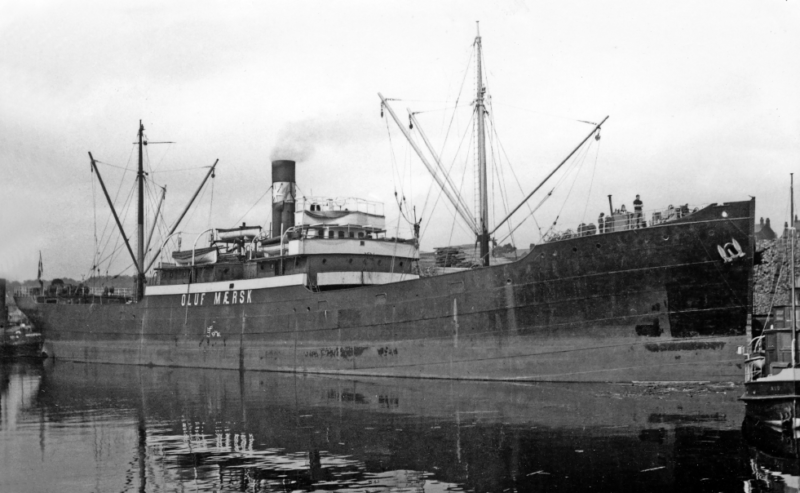
The biggest container ship company in the world had very humble beginnings 116 years ago on 16th April 1904, its affairs being run from the Møller home of Villa Anna in the fishing and boat building town of Svendborg on the south coast of the island of Fyn between the Great Belt and Little Belt of Denmark. On that April day, Capt. Peter Mærsk Møller (1836-1927) and his son Arnold Peter Møller (1876-1965) and four other prominent citizens of Svendborg became directors of the D/S Svendborg A/S (Svendborg Steamship Company) with a capital of 150,000 Danish kroner in Dkr 500 shares. Arnold Peter Møller was employed at the time in the busy Copenhagen office of established ship owner C. K. Hansen as a Chartering Manager, but together with his father took 46% of the issued shares. The very small steamer Laura had been under the command of Capt. Peter Mærsk Møller in 1886, and also later by another son, Hans Mærsk-Møller, the hyphenated surname clearly showing both the Mærsk and the Møller sides of the family.
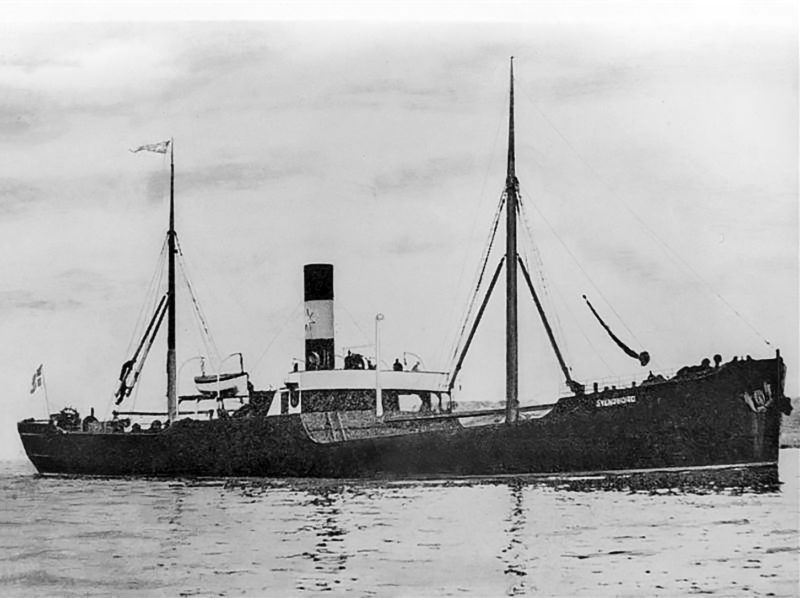
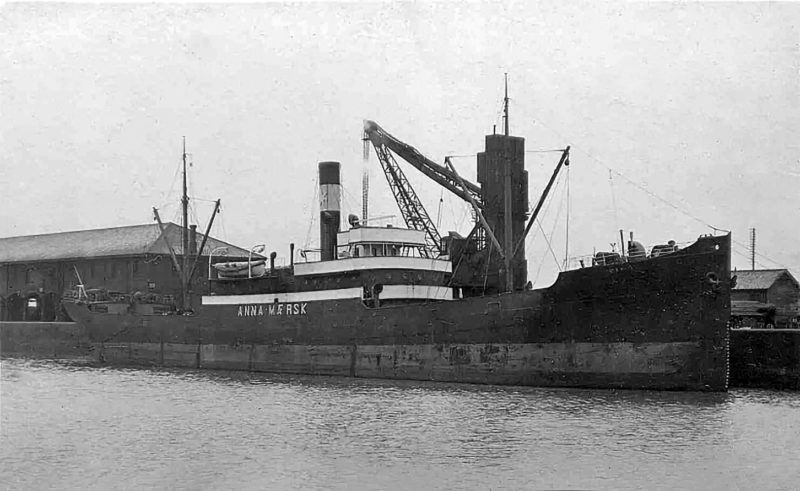
FIRST SHIP OF A GREAT FLEET
The first steamer was purchased six months later on 6th October in the Sunderland built Ada of 1901 from Cardiff owners and was renamed Svendborg after her home port. She was given a black funnel with a central seven pointed white star, which was later worn on a central pale blue band. Svendborg was a busy fishing and boat building town, with also other industries, but only two out of the twenty yards have survived until recently. The new steamer had recorded a reasonable profit during her first year of trading by October 1905. The second steamer was delivered new from a Dutch yard in September 1906 as Peter Mærsk with her sister Anna Mærsk delivered two years later from the same yard as the third ship of the new fleet.
Arnold P. Møller married Chastine Estelle McKinney on 30th April 1910 at her home town of Mayview near Kansas City. They set up home near to Copenhagen and raised four children with the second born in Arnold P. Møller (2) in 1912, who became the future leader of the company for many years, and the foundation of very close links with the United States of America.
Anna Mærsk ran aground leaving Ventspils in January 1911 and was held fast throughout the winter until salvaged by Svitzer of Copenhagen in May and repaired. Arnold P. Møller was working very long hours in the C. K. Hansen ship owner office in Copenhagen while overseeing the affairs of the Svendborg company and its shareholders. He needed another company directly under his own control, which was founded in Copenhagen on 22nd August 1912 asD/S af 1912 A/S (Steamship Company of 1912).The first pair of ships were purchased from Hansen and renamed Lexa Mærsk and Hulda Mærsk. Arnold P.Møller then left C. K. Hansen employment on 1st January 1913 to concentrate fully on ship management for the two new Møller companies, which began with an office staff of four in Copenhagen.

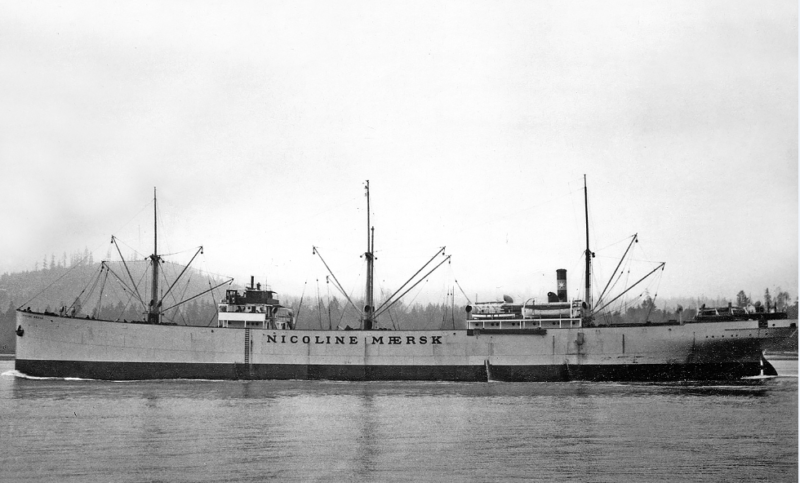
The outbreak of war in August 1914 saw the Møller fleet of ten Baltic and North Sea traders continuing in their trades of timber and pit props to Britain and the Continent, returning with coal. Attempts were made to trade into the U.S.A. away from the war zone, however two ships were lost to German action during the war. During his business trips to West Hartlepool, Arnold P. Møller had become very impressed with the shipbuilding and ship owning business of Sir Robert Ropner of that town. He was determined to use the great benefits of building ships at cost price in the Møller fleet at some point in the future. Land was acquired at Odense in 1917 and three slipways for ships up to 390 feet in length were operational in 1920.
At the first meeting of the British & International Maritime Council in June 1920 after the war, Arnold P. Møller moved a resolution calling for greater freedom of the seas to be maintained. BIMCO had been set up in February 1905 by Newcastle upon Tyne and Scandinavian ship owners to encourage free trade.
The first diesel engine powered ship was delivered from the Odense yard for the worldwide tramp trades as Leise Mærsk in September 1921. These included the Mediterranean homeward trades of bauxite, phosphates and iron ore with a large contract for phosphate from Morocco to Denmark, the traditional grain trade from the Plate, timber and paper pulp from Newfoundland to the U.K., and the Australian and Far East tramp trades.
A further four diesel engine ships entered the tramp trades for Møller during the mid and late 1920s as Sally Mærsk, Chastine Mærsk, Emma Mærsk and Nicoline Mærsk. The steamer Chassie Mærsk built in 1920 was wrecked on 7th January 1922 in very bad weather and poor visibility on an island near Sabang at the northern tip of Sumatra. She had sailed from Hamburg with salt and cellulose for Calcutta and bunkered on the Tyne before passing into the Suez Canal on 16th October 1921 and arrived at Calcutta on 6th November. She then ballasted down to Durban for coal and sailed on 17th December on her last voyage to Sabang.
Arnold P. Møller established his first regular liner service as Mærsk Line on 12th July 1928 linking the U.S.A. with Japan and Asia. Leise Mærsk made the first sailing when she sailed that day from Baltimorevia Panama for the Far East. The first five tankers in the fleet and on charter to Shell and Esso were added by the end of 1928, which had reached 35 ships by the then
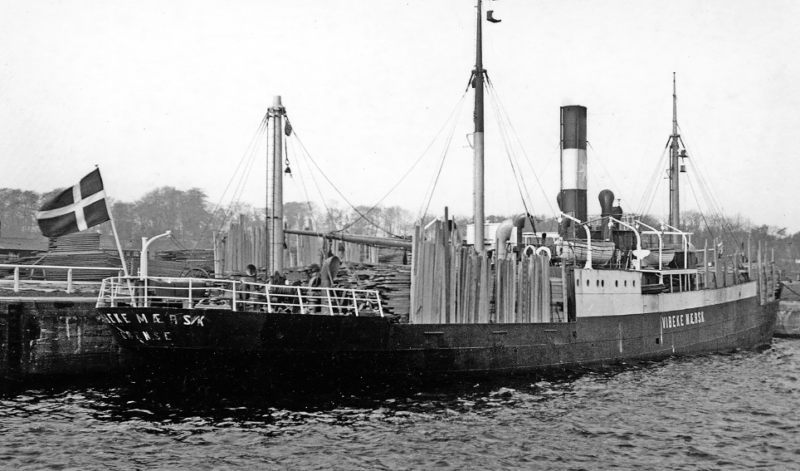
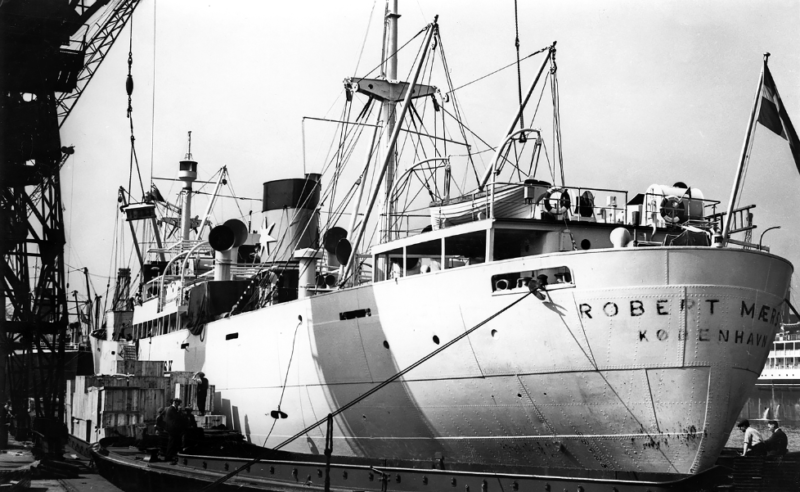

Subscribe today to read the full article!
Simply click below to subscribe and not only read the full article instantly, but gain unparalleled access to the specialist magazine for shipping enthusiasts.
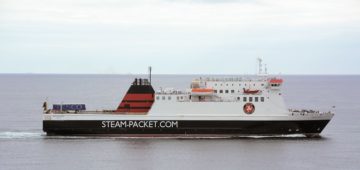



Comments
Sorry, comments are closed for this item